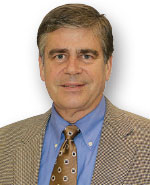Eerie similarities: Postdocs and assistants

Karl Danneberger, Ph.D.
Postdoctoral researchers, commonly known as postdocs, play an integral part in scientific advancement. A postdoc holds a doctoral degree (Ph.D.) and is employed in a faculty member’s laboratory and engaged in research, acquiring the needed professional skills. Additionally, they often write grants to help fund the laboratory. Faculty mentoring is a big part of postdoc training.
Postdocs are extremely skilled and drive scientific research at universities, especially in the biomedical area. Numerous Nobel Prize winners did their award-winning work as postdocs, including James Watson, who described the double-helix structure of DNA. Postdocs have a deep passion and love for science that drives them to work long hours at relatively low pay. The goal of a postdoc is to end up with a faculty position and their own laboratory. Regarding pay — a sore point — postdocs often joke that they could earn more being paid minimum wage with overtime than with current salaries.
However, change is coming this year for faculty and postdocs.
The Department of Labor announced in May that its final rule on the Fair Labor Standards Act (FSLA) — which will affect more than 4 million workers, including postdocs — goes into effect Dec. 1, 2016. Garnering considerable attention is the update of salary and compensation levels needed for executive, administrative and professional workers, including postdocs, to be exempt. According to the Department, the rule “Sets the standard salary level at the 40th percentile of earnings of full-time salaried levels workers in the lowest-wage Census Region, currently the South ($913 per week; 47,476 annually for a full-year worker). The alternative to increasing the salary is to document hourly pay along with overtime.
A quote from a blog post by Francis Collins, director of the National Institutes of Health, and U.S. Secretary of Labor Thomas E. Perez, makes the choice clear: “… So, from our vantage point, it seems that the only option consistent with the professional nature of scientific work is to increase salaries above the threshold.”
I think postdocs deserve and are worth the pay increase. Given their education and talent they should be paid more than $47, 476. (The current base salary, set in 2004, is $23,660.)
There’s no doubt that it’s going to be more difficult to fund postdocs. Depending on the funding source and geographical area, it’s unlikely that hiring a postdoc will involve a minor cost increase. And when funding postdocs no longer is feasible, money will shift into alternative labor types, such as graduate students and research assistants.
The downside of moving away from postdocs, especially in the competitive world of science where they are critical, is a loss of quality and competitiveness in research programs.
Some of you may note the similarities between postdocs and assistant superintendents in this column. You could substitute “assistant superintendent” for “postdoc” and “faculty” with “superintendent.” However, one difference between assistants and postdocs is that the current number of postdocs rose 150 percent between 2000 and 2012, while the number of tenured faculty positions available has flattened. Some, but not all, think the new FLSA rules will help reduce the postdoc glut.
Conversely, there’s a shortage of qualified assistants entering the golf industry. Enrollments are down in turf programs across the country to a point where we are not delivering enough quality assistants to fill the available positions. I welcome the new FLSA regulations as a potential means of attracting students who are interested in our profession but have been chased away by long hours and low pay.
I hope the golf industry will embrace the change. If we are not currently producing enough qualified assistant superintendents, who will become superintendents in five to 10 years when current superintendents reach retirement? If we are not taking on and training quality assistants, what will the profession of the golf course superintendent look like in the future?








